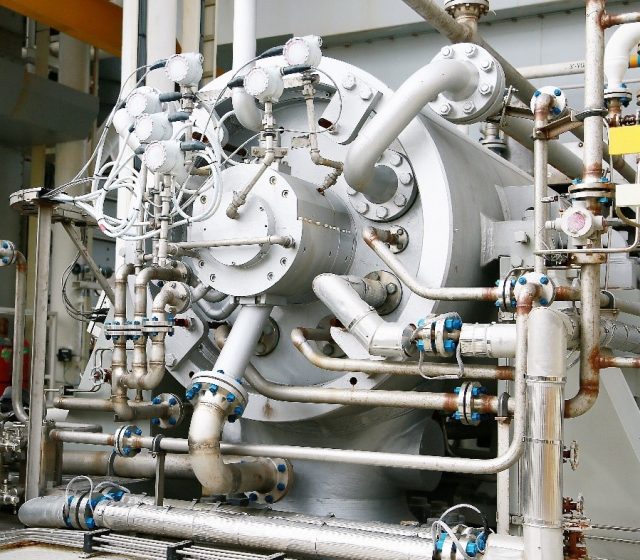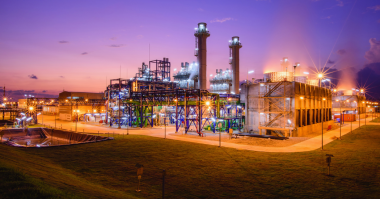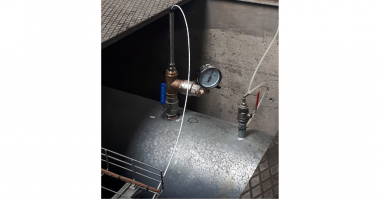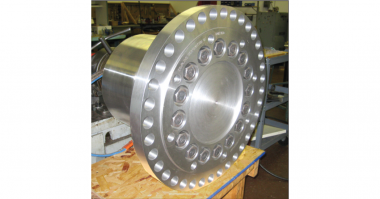Author: Robert X. Perez, Machinery Engineer
In this series of columns, I am walking readers through the process of compressor selection. In Part 1, I explained that there are three basic steps involved in the compressor selection process: 1) Determining your ACFM requirements, 2) selecting potential compressor design candidates from the GPSA “Compressor Coverage Chart” compressor selection map, and 3) then making the final selection based on compression ratio requirement.
Let’s continue our discussion by explaining how to calculate gas flow in terms of ACFM. Actual cubic feet per minute (ACFM) stands for the cubic feet per minute of gas or air flow at the actual conditions inside the piping. A special distinction is given to the volumetric flow at the conditions present in the compressor inlet flange or nozzle. This gas flow, typically referred to as the inlet cubic feet per minute (ICFM) flow, is often used by compressor designers to determine actual gas or air velocities entering a compressor.
If the process was moving a gas at exactly the “standard” condition, then ACFM would equal SCFM. Unfortunately, this usually is not the case as process temperatures and pressure change from one point in the process to another. To move a gas, a positive pressure or vacuum must be created. When positive pressure is applied to a standard cubic foot of gas, it gets smaller and conversely when a vacuum is applied to a standard cubic foot of gas, it expands. The volume of gas after it is pressurized or rarefied is referred to as its “actual” volume.
Now we can begin calculating. Here is the equation to convert from SCFM to ACFM, assuming an ideal gas, i.e. z=1 (z, the compressibility factor, is defined latter in this article):

In Equation 2 above, Pactual is in psia and Tactual is in oR.
Here is the equation to convert from ACFM to SCFM assuming an ideal gas:

In Equation 3 above, Pactual is in psia and Tactual is in oR.
Here is the equation to convert from SCFM to ICFM assuming an ideal gas:

In Equation 4 above, Pinlet is in psia and Tinlet is in oR.
Example of how to convert from SCFM to ACFM
Let’s say you want to know what volume of gas 2500 scfm represents at 200 psig and 250 oF. First, make sure you convert gauge pressure into absolute pressure units, i.e. 200 psig = 214.7 psia and temperature into absolute units, i.e. 250 F =710 R. Now we can readily calculate ACFM using equation (2) and obtain a value of 233.1 acfm.

Compressibility Factor (Z)
Keep in mind that the flow conversion equations presented above assume you are dealing with an ideal gas. In general, deviation from ideal gas behavior becomes more significant the closer a gas is to a phase change, the lower the temperature, or the higher the pressure. The compressibility factor (Z), also known as the compression factor, is the ratio of the expected volume of a gas to the volume of an ideal gas at the same temperature and pressure. The compressibility factor is a useful thermodynamic property for correcting the ideal gas law to account for the gas applications encountered in the real world.
If we insert the compressibility term into equation 1, we get:

Equation (5)
After a little manipulation of equation 5, we arrive at the ACFM equation with the compressibility factor z (see Equation 6 below):

Let’s look briefly how the compressibility factor changes as a function of pressure for natural gas with a specific gravity of 0.6 (Table 1). Notice that for z to significantly reduce the idealized flow, the pressure must exceed 1000 psia for natural gas at 100 oF. As a rule of thumb for natural gas, we can say that z will only vary from 1.00 only a few percent if your suction pressure is only a few hundred pisa. However, if your suction pressure is much greater than a few hundred psi, you need to include z in your calculation of the ACFM.
Table 1: Compressibility Factors for natural gas with a specific gravity of 0.6

If, for example, we are moving 1000 scfm of natural gas (S.G. =0.6) at 100 oF and 400 psia, then the corrected ACFM value will be:
![]()
Always remember that the compressibility factor is a function of pressure, temperature, and the actual type of gas being analyzed, which means you’ll need to get an accurate set of compressibility tables for gases you plan to analyze. The “GPSA Engineering Data” books contain very detailed compressibility tables for natural gas mixture.
We are now ready to go to the next step in the compressor selection process. In Part 4, I will show the readers how to use the GPSA “Compressor Coverage Chart” to identify potential compressor design candidates.
READ PART 3
http://test.empoweringpumps.com/how-to-select-a-compressor-part3
About the Author
 Robert Perez is mechanical engineer with more than 35 years of rotating equipment experience in the petrochemical industry. He has worked in petroleum refineries, chemical facilities, and gas processing plants. He earned a BSME degree from Texas A&M University at College Station, an MSME degree from the University of Texas at Austin, and holds a Texas PE license.
Robert Perez is mechanical engineer with more than 35 years of rotating equipment experience in the petrochemical industry. He has worked in petroleum refineries, chemical facilities, and gas processing plants. He earned a BSME degree from Texas A&M University at College Station, an MSME degree from the University of Texas at Austin, and holds a Texas PE license.
Mr. Perez has written numerous machinery reliability articles for magazines and conferences proceedings and has authored 4 books and coauthored 4 books related to machinery reliability. He resides in San Antonio, Texas.
In this series of columns, I am walking readers through the process of compressor selection. Last time, I explained that there are three basic steps involved in the compressor selection process: 1) Determining your ACFM requirements, 2) selecting potential compressor design candidates from the GPSA “Compressor Coverage Chart” compressor selection map, and 3) then making the final selection based on compression ratio requirement.





Comments